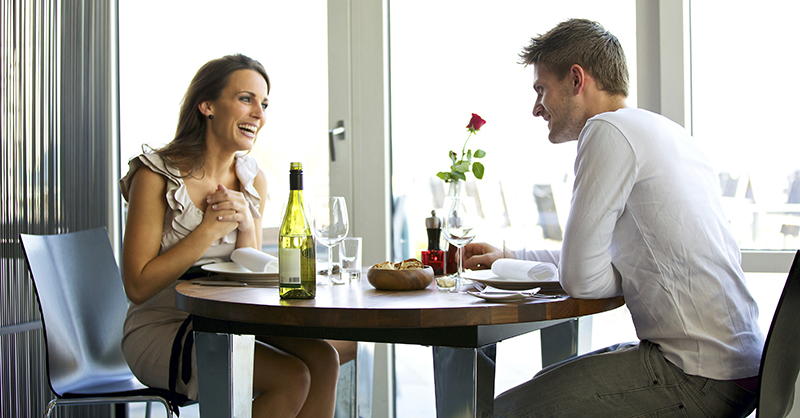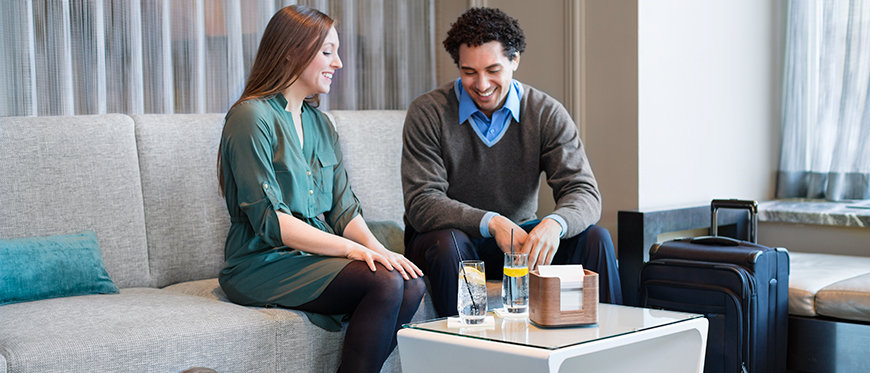If you want to find new growth in hotel food and beverage revenue in today’s hyper-competitive marketplace, you have to plant seeds beyond the traditional fields, using creative techniques and adopting a whole new mindset.
New F&B revenue opportunities here, there and everywhere
Traditional hotel dining options rest in set locations, typically a restaurant or, in the case of room service, a guest’s room. But the new movers and shakers in the hotel business aren’t resting on old laurels – they’re moving food and drink to new locales, to better serve their super-mobile guests (and also give them more reasons to stay put on the property).
“the new movers and shakers in the hotel business aren’t resting on old laurels – they’re moving food and drink to new locales”
As USA Today reported, “On many hotel restaurant menus, you’re more likely to find kimchi shrimp nachos and Bloody Mary bacon thrice-cooked fries than salmon with a side of spinach. As for where people like to chow down these days: Hip lounges, benches or tiki bars rather than elegant dining rooms.”
Take the example of The Hudson Hotel in New York City. Guests (or locals) can order “casual culinary experiences” like burgers on brioche with duck-fat fries, then get notified via text when they’re ready… to be eaten in the lounge, their room, some cozy corner of the hotel…or even anywhere in the city at large.
You can also take a tip from the food truck phenomenon and feature food carts, with rotating, trend-conscious mini-menu offerings, from fish tacos to Hawaiian poke.
Keep F&B staff costs from eating you alive
 Of course, flexibility in service presents its own hotel challenges. If you’re empowering guests to “eat anywhere” (what one publication calls the “democratization of F&B”) then you have to be prepared to support, if not literally serve, their dining preferences almost anywhere. Rather than investing in roaming staff, trendsetting hoteliers can, for instance, strategically place a new generation of high-style paper and utensil dispensers around public spaces. (Their presence also visually communicates “This is an OK place to eat,” helping contain food consumption even in today’s more flexible environment.)
Of course, flexibility in service presents its own hotel challenges. If you’re empowering guests to “eat anywhere” (what one publication calls the “democratization of F&B”) then you have to be prepared to support, if not literally serve, their dining preferences almost anywhere. Rather than investing in roaming staff, trendsetting hoteliers can, for instance, strategically place a new generation of high-style paper and utensil dispensers around public spaces. (Their presence also visually communicates “This is an OK place to eat,” helping contain food consumption even in today’s more flexible environment.)
Serving a new app-etite for DIY room service
Check out any of the many “Hotel trends for 2017” articles and you’ll see a common thread: app-driven personalization for guests. This includes equipping guests – and, for a real volume boost, conference attendees – to be able to order freshly prepared food and have it waiting for quick pick up, or to be eaten at a vendor booth or even a break-out meeting space. Larger hotel organizations can integrate food into their overall app offering, but even one-location boutique hotels can tap into this trend with restaurant apps like Splick-it and eHungry.
Hotels are making F&B more eventful
For the really ambitious hotel or resort culinary, special events can also be a great generator of revenue and new-business generating buzz. Consider the case of the Broadmoor Resort, which has their own “Taste and Savor Moveable Feast” event. Billed as one of the largest food festivals in Colorado, this spans several weekends, drawing in guests from afar and locals alike for “delicious food, unique drinks, enlightening dialog, new friends individualized experiences and lots of fun!”
But you don’t have to make a grand statement (or investment). Mini-events, like wine-tasting and seasonal food experiences (especially in your off-season) can be effective as single- or even partial-day events, leveraging your existing F&B expertise.
Whatever your approach to the new world of hotel dining, the message is clear: you need to get creative and get energized, because there’s no time to rest when it comes to hotel F&B beyond restaurants.
Sources:
USA Today
Hotel News Resource
Streetfight Mag
Broadmoor Resort (CO) Moveable Feast
